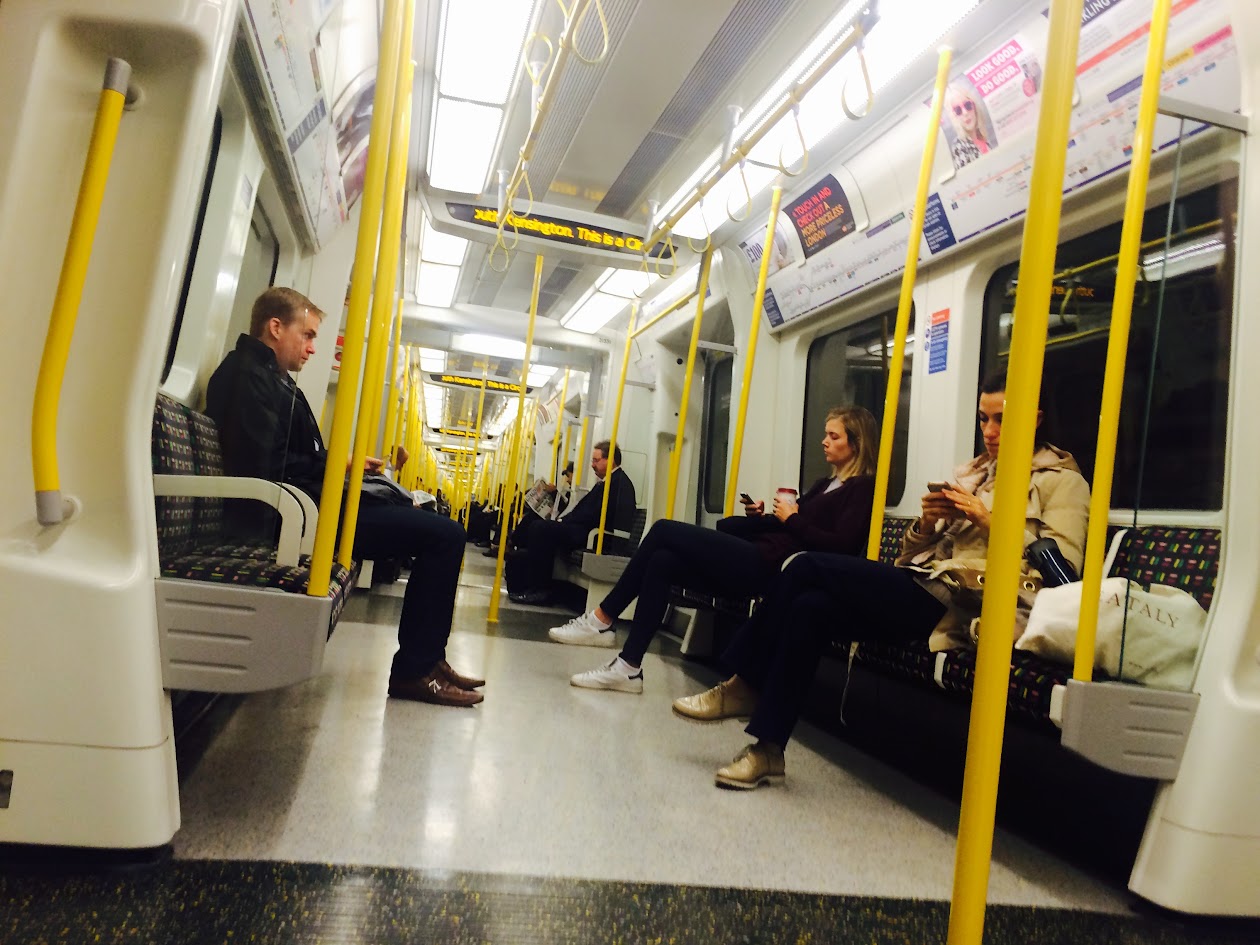The Soft Stuff That’s Actually the Hard Stuff – Season 2
Week 4: The Strange Power of Talking to Strangers
So far, this season has shown us that:
- Missing Tupperware lids test your resilience.
- Lending a pen tests your respect for boundaries.
- Cancelling plans tests your honesty about energy.
Now we move on to something even more telling: talking to strangers.
North vs South (and Why Londoners Think I’m Unhinged)
In the North, we talk to strangers. It’s a sport. Standing in a queue? Someone will ask about your holiday. At a bus stop? A full weather report plus a bit of gossip.
Head south to London, though, and everything changes. On the Tube, I like to smile at people. Sometimes I even say hello. The response? Somewhere between “You’ve escaped from a secure unit” and “You’re about to sell me solar panels.”
And I enjoy it. Because it unsettles people in the best possible way.
So is this just North vs South? Partly. But it’s really big city vs smaller community. Big cities breed anonymity. Small towns breed chat. The bigger the crowd, the more invisible we make each other.
The Phone Problem
But here’s the twist. We’re not just ignoring strangers in big cities anymore — we’re ignoring everyone. Because our heads are buried in glowing rectangles.
Think about it:
- You check out of a hotel and thank the receptionist while also replying to an email.
- You order coffee and mumble your name without ever looking at the barista.
- You climb into a taxi, grunt “airport please,” and then immediately disappear into WhatsApp.
It’s not just rude. It’s a missed opportunity for connection.
And the science backs it up: people who have phones on the table during conversations report lower levels of empathy and trust (Przybylski & Weinstein, Journal of Social and Personal Relationships, 2013). Your brain literally picks up on the divided attention and says: “This interaction doesn’t matter.”
So, the problem isn’t just strangers on trains anymore. It’s strangers — and service staff — everywhere.
The Science of Strangers
Here’s the irony: talking to strangers makes us happier — even when we assume it’ll be awkward.
A 2014 study from the University of Chicago (Epley & Schroeder, Psychological Science) found that commuters who struck up conversations with strangers reported higher levels of happiness than those who sat in silence. Even introverts. Even in London.
Why? Because humans are wired for micro-connections. A tiny chat releases dopamine and oxytocin — the same brain chemicals that bond us to friends. Even a brief exchange with a stranger reminds your nervous system you’re not alone.
Robin Dunbar’s work (1996) shows that language evolved as a form of “vocal grooming.” In other words, small talk is the human version of monkeys picking nits. Which makes moaning about the weather with a stranger on the bus basically emotional grooming. (Less itchy, more polite.)
Global Stranger Scripts
- Japan – Strangers rarely talk unless context demands it. Silence is golden.
- Italy – You’re family within 30 seconds. Expect questions about dinner and politics.
- US – Friendly chit-chat is expected. “How’s your day?” is social lube, not therapy.
- UK – Depends where you are. North: everyone’s a mate. London: everyone’s an obstacle.
It’s not just Britain. It’s New York vs small-town Tennessee. Mexico City vs rural Oaxaca. The bigger the city, the stronger the invisible walls.
How Strangers Fit into the Series
- Lids: How we handle frustration.
- Pens: How we handle boundaries.
- Cancelling: How we manage energy.
- Strangers: How we choose connection.
Together, they show that the real work of being human isn’t in the “big moments.” It’s in the tiny, everyday decisions — whether we connect, avoid, or bury ourselves in a screen.
Four Takeaways for Talking to Strangers
1. Start with the Obvious
- In the North: weather, queues, bus delays.
- In London: daring to make eye contact.
- Globally: anything shared in the moment is fair game.
2. Put the Phone Down
- With strangers: Eye contact beats Instagram.
- With service staff: Say thank you, use their name, engage like they’re human (because they are). You’ll both feel better.
3. Notice the Lift
- After a small chat, your mood rises. That’s your dopamine system working. Use it as a micro-battery top-up in draining days.
4. Practice Awkwardness Tolerance
- Sometimes it’s clunky. People don’t always respond. That’s fine. Awkwardness won’t kill you.
- And sometimes, being the smiling lunatic on the Tube is the highlight of someone’s morning.
The Big Lesson Under the Stranger
Talking to strangers isn’t about weather or queues. It’s about choosing humanity in the small spaces — when it’s easier to stay invisible, or disappear into a phone.
And here’s the kicker: mobile phones aren’t neutral. Neuroscience shows the mere presence of a phone reduces empathy and depth of conversation (Przybylski & Weinstein, 2013). Why? Because part of your brain is already waiting for the next ping. You’re half-there, and people feel it.
Hard solution: Create “phone-free micro-zones.” One coffee order. One cab ride. One checkout. No phone. Just engage. Think of it as a neural workout for your prefrontal cortex — the part that resists impulse. The more you practice, the easier it gets. And the more human connection you get back.
From Strangers to Selves
Next week: The Bathroom Mirror Pep Talk.
Why half of us rehearse speeches in the loo — and what our inner monologue says about us when nobody’s watching.



